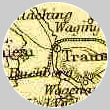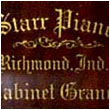









2 0 0 3
NOVEMBER 02
NOVEMBER 01
OCTOBER 03
OCTOBER 02
OCTOBER 01
SEPTEMBER
AUGUST 02
AUGUST 01
JULY 02
JULY 01
JUNE 02
JUNE 01
MAY 02
MAY 01
APRIL 02
APRIL 01
MARCH
FEBRUARY
JANUARY
L I N K S
AAA
Abulafia
Boardwalk
Bread
CHN
Christ Lutheran Church
Neighborhood Research Institute
Old Oaks
Olde Towne
PolyphonyBusiness First
Business First Daily Edition
Call and Post
Columbus Alive
Columbus Dispatch
Columbus Free Press
Columbus Post
Communicator News
The Daily Reporter
Inner Art
The Lantern
The Other Paper
Suburban News Publications
Short North GazetteNBC4 Columbus
WSYX 6
10TV WBNS
ONNBBC World Service
CNN
Christian Science Monitor
The Guardian
IndiaTimes
Newsday
New York Times
StarTribune
Washington Post
Washington TimesAfricaPundit
William F. Buckley Jr.
Command Post
Crooked Timber
Daniel W. Drezner
John Ellis
David Frum
Hit & Run
Instapundit
Mickey Kaus
Joshua Micah Marshall
The Note
OxBlog
Virginia Postrel
Wes Pruden
Jim Romenesko
Andrew Sullivan
Volokh ConspiracyDay by Day
Doonesbury
Ted Rall
Peter Steiner
Tom Toles
Tom TomorrowCronaca
Languagehat
Language Log
Open Brackets
PaleoJudaicaBlue Ridge Blog
Candid Colors
Communication Arts
Conscientious
D.U.I. Studio
Ecotone Wiki
Maps and territories
Smoky Mountain JournalAcme Art Company
Ballet Met
CCAD
Columbus Arts
Columbus Arts Festival
Columbus Metropolitan Library
Columbus Museum of Art
Columbus Symphony
Dialogue
Franklin Park Conservatory
Glass Axis
Music in the Air
Opera Columbus
Thurber House
Wexner CenterCity of Bexley
City of Columbus
Columbus City Council
Columbus Police
Columbus Public SchoolsOTENA egroup
OTENA-NIC egroup
OTENA-tours egroup
OTENA-trustees egroup
Old Oaks egroup
Ohio Parsons Blockwatch egroup
> NOVEMBER 04
s N O V E M B E R 2 2 , 2 0 0 3
Posted images
The city after dark
Jeffrey Mansion
Columbus College of Art & Design, One
Columbus College of Art & Design, Two
Columbus Museum of Art

Greenlawn Cemetery
Greenlawn, One
Greenlawn, Two
I believe that my great-grandfather is buried somewhere on these grounds. I drove around, thinking to look in some section with old German names.
Greenlawn Cemetery is located just outside German Village, however, so this plan was quite ineffective at eliminating any sections.
It would be simpler just to ask -- I know my mother and her cousin Mary Jo visited his grave when Mary Jo was in town from Australia this spring. As it was, it gave me a good excuse to wander around and explore.
The names were very similar to the church roster when I was growing up: Metzger, Bauer, .... There were a number of different ways to spell Schultz, but none the right Schultz that I was looking (not dilligently) for. Schulz, Schultze, Shultz, Shulze, ...
I drove past Eddie Rickenbacker's grave. I know many of Columbus' founders are buried here, but I didn't see others that I recognized.
The gravestones range from toppled and weatherworn beyond decipherment to meticulously-maintained.
It was a wonderfully warm day out, cloudy but with occasional bursts of sun that made it worthwhile to be alive.
f N O V E M B E R 2 1 , 2 0 0 3
BOL / Newsmakers
Arrived early, left lateAll work and no play -- well, a little maybe
It was a beautiful day outside, and I took an hour for lunch to run home and lay in the hammock
Hard not to wonder

Did Johnny Hart -- the beloved creator of "B.C." and one of the most widely read cartoonists on Earth -- sneak a vulgar defamation of Islam into the comics pages last week?
...
Hart and his syndicate say no -- that a simple, straightforward joke is being misconstrued. That may well be true, but the 73-year-old cartoonist's history of evangelizing his Christian beliefs through his comic cavemen have left many people doubtful.
...
[Marshall] Blonsky [professor of semiotics at the New School in New York] said the cartoon seemed in some way manipulative -- constructed in "a polysemic fashion, to supply multiple meanings that would deliberately evade interpretation." When told of the religious interpretation, he said that in this light, the cartoon suddenly made logical sense. The coincidences were simply too great to ignore, he said.
...
"It's highly, overwhelmingly, incontrovertibly suspicious," said Berkeley Breathed, creator of "Bloom County" and the new Sunday-only strip "Opus." "There's no explanation for that gag without Islam. It's meaningless."
...
For non-academics, though, the issue is intent and intent only. If Hart did not intend to slur Islam, then he is absorbing some terribly unfair criticism. But what if he did intend to slur Islam? You need only read the Constitution to conclude that Johnny Hart had every right to express whatever views he has. But was it right to do it subversively, in what would amount to an act of intellectual sabotage?
r N O V E M B E R 2 0 , 2 0 0 3
Choir rehearsal
Al was sick, so rehearsal was shorter than usualBexley afterward
w N O V E M B E R 1 9 , 2 0 0 3
Images
The City after DarkOld Veterans Memorial
Columbus Athaenium
Fifth Street
BalletMet sidewalk
Naughten Street
Fire Museum
Midland building
St. Joseph Cathedral
M&D to Columbus
t N O V E M B E R 1 8 , 2 0 0 3
Link
Maps and territories
An NYT essay
A moth, a butterfly, and elegant merger of science and art | Thomas Eisner | New York Times
There was a world of hidden dimensions in these [wings of butterflies and moths], a treasury of abstract art to be explored, pointillist in design, elegant in coloration, and infinitely pleasing. There was proof in these images that science and art, while dwelling separately in our consciousness, may well merge in that vague undecipherable domain of the subconscious that guides us in our passions.
Interesting people
Leo ThurnThurn has ushered parishioners to their pews and passed the collection plate at St. Mary Catholic Church in German Village since he was 19.
Now 70, Thurn volunteers his time once every Saturday and twice every Sunday during Masses.
...
The number of parishioners at St. Mary began to slip in the 1950s as houses and shops in German Village deteriorated.
"It was becoming a slum," Thurn recalled.
The German Village Society was founded in 1960 and sparked the area’s subsequent revitalization. Since then, the congregation has remained steady at about 750 families, Thurn said.
"Today, we have more young people and babies than ever," he said. "I love the young ones. They’re the future."
Pointing to the church’s colorful stained-glass windows, statues and elaborate woodwork, Thurn said, "Many young people like the inside of the church. It’s old-fashioned. Brides especially like to get married here."
Columbus Dispatch
Elderly man beaten, robbed at [somewhere]
WBNS 10-TVTwo men barged their way into an east Columbus home, tied up the elderly homeowner and robbed him.
It happened on Littlebrook Way just before noon Monday.
Yahoo Maps responded : "We assumed that you meant Little Brook Way, instead of Littlebrook Way."
OK.
Assuming that they did mean Little Brook Way, that puts this incident in the Brice Road / Livingston Avenue corridor that the Columbus Dispatch (NB: The Dispatch Co. also owns WBNS) featured on Sunday in a prominent article as "struggling with change."
A bandage covers the bruised, broken finger that supported a diamond wedding ring for close to half a century.
The widowed grandmother lost the ring on Oct. 27 when three men yanked it off her finger outside a restaurant near the Brice Road-Livingston Avenue intersection. The men slapped her and took her driver’s license and credit cards as well. The woman, 67, is afraid to reveal her name, but said she is glad she recently moved out of the Far East Side neighborhood. "It’s very sad when you see the deterioration of an area," she said. Others share her concerns about the crime and the sagging fortunes of Brice Road’s business district.
Context is so easily provided on the Web. It could have helped this story.
m N O V E M B E R 1 7 , 2 0 0 3
Images
The City after DarkFourth & State Streets
Broad Street United Methodist Church
Gay Street
Techneglas
YWCA
Columbus Club
Columbus Dispatch
More on Gabriel García Márquez
Living to tell the tale: The man of Macondo | New York TimesGarcía Márquez's new book, a memoir called ''Living to Tell the Tale,'' reminds us that what seems so fantastical in ''One Hundred Years of Solitude'' is in fact a reasonable description of Colombia, where ghosts are still central to workaday life and the successor to the civil war depicted in the novel rages to this very day.
The ghosts and the guerrillas benefit from a hallucinatory topography that keeps conventional reality at bay. The western part of the country is cleaved by three chains of the Andes, which carve the region into isolated pockets while forming a Tolkienesque barrier between the cities of the Caribbean coast and the capital of Bogota, which sits atop the easternmost chain at the ear-popping height of nearly 8,600 feet. The majority of the country lies east of that drizzly mountain capital and is divided between the Amazon jungle and a vast plain, much of which floods most of the year.
A half-century of civil war has left Colombia a very dangerous place. At the moment, 40 percent of the country lies in the hands of guerrilla organizations. The largest is known as the Revolutionary Armed Forces of Colombia, or FARC, which supports itself by taxing the cocaine producers who supply North America, extorting protection money from oil companies that drill in the region and, most commonly, through kidnapping for ransom. The small, inept military tries to keep the guerrillas in check with paramilitary groups, but they have a history of violence indistinguishable from that of the rebels and have dipped into the drug trade as well.
Planning lunch
At Buca di BeppoGood planning, very mediocre lunch (Manicotti)
And I had been looking forward to it, too
n NO V E M B E R 1 6 , 2 0 0 3
A day of sound and music
And much silenceSignifying what?
From the wonderful song that came on the radio as I pulled into the garage, Me and Bobby McGee ...
Freedom´s just another word for nothin´ left to lose
Nothin´ don´t mean nothin´ hon´ if it ain´t free, no no
And feelin´ good was easy, Lord, when he sang the blues
You know, feelin´ good was good enough for me
Good enough for me and my Bobby McGee... to the verse of a hymn from today's service.
I ask no dream, no prophet ecstasies,
No sudden rending of the veil of clay,
No angel visitant, no opening skies;
But take the dimness of my soul away.This is why I go to church. Take the dimness of my soul away. I don't need inexplicable miracles -- the "explicable" ones are plenty -- if I just open my eyes, my ears, my heart, and let them into my soul.
An eclipse of the moon is easily explained and predicted to the minute, but this does not diminish the wonder of its experience.
Spirit of God, descend upon my heart;
Wean it from earth; through all its pulses move;
Stoop to my weakness, strength to me impart;
And make me love Thee as I ought to love.I usually like Pastor Hudson's sermons, and this, on Mark's little apocalypse, was no exception. Here would have fit an allusion to "Oh, no, not another apocalypse" from any random Buffy the Vampire Slayer episode.
I took grandma to Panera for lunch, (she likes their onion soup), and then we went home to Bexley and read the newspaper and talked. She asked several times through the day if there was anything on TV I wanted to watch, but the quiet was far better.
Old downtown stores that Grandma remembers: Montgomery Ward at Third and Main (now a parking lot -- a large sign has read "will build to suit" for as long as I can remember; The Union, later moved east to Town & Country (I vaguely recall it in that location); Penney's. Madison's, which lasted into the 1990s, dying out only after choosing not to move from North High when the insular Columbus City Center opened, killing off any remaining freestanding retail. The Madison family had wisely sold out long before that, allowing Bexley Mayor David Madison, among others, to be able to afford to live in Bexley and devote all of his time to the low-paying mayoral post.
Great-grandfather moved to the parsonage, an "huge barn of a place" next to Old Trinity when Grandpa was five. The parsonage no longer exists.
Grandma and grandpa's first home was on Sheridan Avenue in Bexley, in a rented duplex. Many Capital University colleagues lived sid-by-side there on "professor's row." They were the first to move out, a couple of blocks east, to the home on Astor Avenue that Grandpa convinced the builders to add a second floor to. A bay window in the front was perfect for the baby grand piano that they later acquired.
The Kaupers came from Schleswig-Holstein in Germany; grandma's father came to America when he was five.
A cousin spent some time in Europe and tried to trace the family, but the parish church from the town he thought he needed to find had burned down, and along with it all the town records.
Grandma's grandfather was a Lutheran pastor (when Lutheran pastors were truly preachers: his wife sat in the back of the church with an umbrella which she would move from her right to her left side when she was ready for him to bring the sermon to an end -- when he got to "in conclusion," you could count on only another 15 - 20 minutes) with a church in Richmond and later in Dayton. She doesn't think he ever owned a car, and can remember him taking her downtown on the trolleys in Dayton.
Her uncles almost all worked for the Starr Piano company [more] in Richmond, one of the largest piano manufacturers in the U.S. One uncle worked on the ivory keys, back when piano keys truly were made of ivory.
The Starr Piano Company also owned Gennett Records, a pioneer in jazz recordings of Jelly Roll Morton and many others.
It was expected that her father would also go to work at the piano factory -- which he did, at first. Three days later, but not before he had already found another job, he announced that he would not be returning.
He instead became a leading salesman for the Adam H. Bartel wholesalers company. He was a book person, and loved to read to Grandma -- she wishes he had been able to go to college, but it just hadn't happened. He was able later to send all sorts of things to Columbus -- if one crayon in a box was broken, the whole box was discarded and probably sent to Mom and her brothers. Once, grandma received a huge (and very heavy) case, which proved to be full of smaple buttons. She didn't buy buttons for years and years, and a popular children's game was "button salesman."
Grandma remembers eating popcorn on the front porch with her mother. She and Mom enjoy popcorn together today.
We enjoyed a little ice cream.



